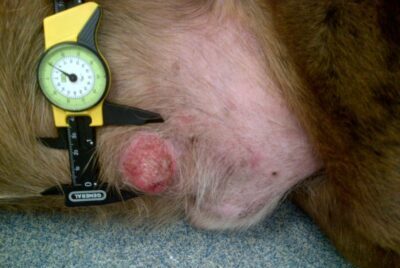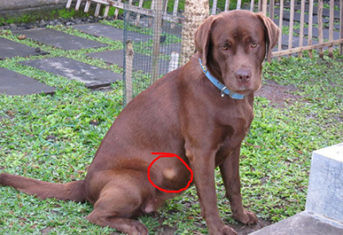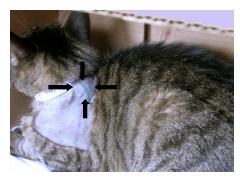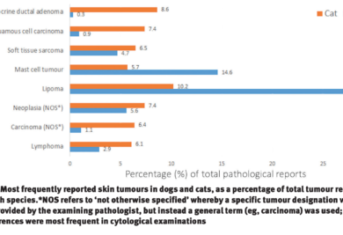What should I do about the lump on my dog’s skin?

What should I do about the lump on my dog’s skin?
Finding a skin lump on your dog always provokes concern. Is it just another fatty tumor, or is it something more sinister? Fortunately, veterinarians have the diagnostic tools to determine whether your pet’s lump is malignant or benign, but it’s up to pet owners to alert your veterinarian of any new growths.
Fine Needle Aspiration Cytology
When I identify a new skin mass on a dog during an examination, I typically recommend the mass be tested using a needle to take some cells out of the mass. The cells are then squirted on a microscope slide and sent to the laboratory. In the laboratory, the slides undergo a staining process to make the cells on the slide readily visible when viewed under a microscope lens. This entire process is called fine needle aspiration cytology. This process helps to determine if the mass is an infection, a cyst, a benign tumor or a malignant one. Pet owners are often reluctant to test skin masses because of their benign appearance, opting to watch the lump instead. However, forgoing fine needle aspiration cytology can mean losing precious time if the lump turns out to be malignant.
Don’t “Wait and See” if Your Dog’s Lump Gets Worse!
Inevitably, skin masses, whether they are benign or malignant, get larger if the only intervention is watching. Bigger is not better if these masses are ultimately found to be cancerous. Larger tumors are more difficult for veterinary surgeons to remove and incomplete tumor removal often confers a poor prognosis. Take mammary gland tumors in dogs, for example. A recent study from Germany showed an increase in diameter of only a few millimeters can have a big impact on the ultimate outcome in dogs undergoing surgery for mammary gland tumors. In a study of canine mast cell tumors and soft tissue sarcomas, two tumor types notoriously difficult to surgically remove, bigger tumors were more likely to have incomplete removal compared to smaller tumors. These two studies support my recommendation to test skin masses at the time they are discovered to allow appropriate treatment when masses are small. Don’t let your veterinarian’s recommendation of a fine needle aspiration cytology scare you! Twenty-five percent of skin masses are benign fatty tumors. But early detection of skin tumors can lead to a better outcome, so be proactive and do more than watch the lump on your dog.

































